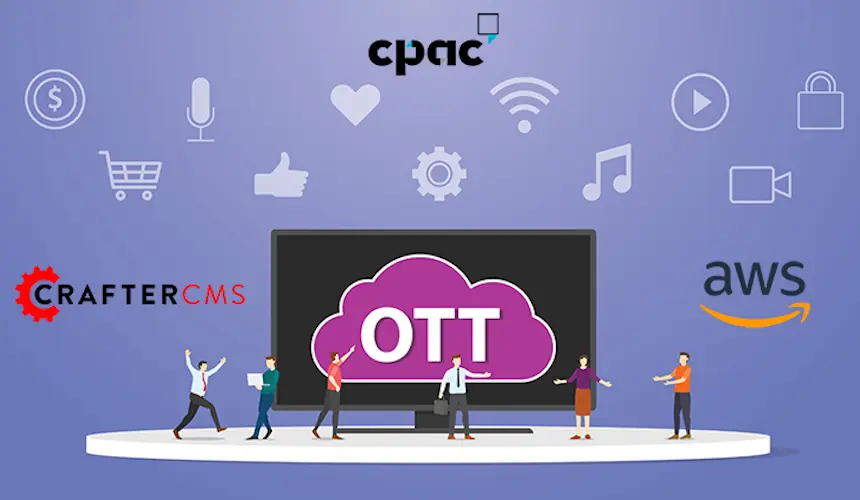Headless CMS For Municipal Governments

Sara Williams

Municipal governments and other city-wide public-sector organizations have been known to have long, drawn-out processes that citizens dread. However, in recent times, many of these organizations have begun to embrace digital transformation and the tech modernization that comes with it.
Municipalities can create more efficient processes with the right technology and deliver a much improved citizen experience.
A headless CMS offers one solution that can help governments provide seamless, secure, and accessible digital experiences to their communities. In this article, we’ll explore why government municipalities should consider a headless CMS to power their digital experience and what makes CrafterCMS the ideal option.
The Need for Transformation In Government
City governments are being placed under increasing pressure to modernize their digital infrastructure and improve their engagement with citizens. This pressure stems from the need to deliver multiple services, evolving requirements, and the state of their current infrastructure.
Multiple Services
Municipal governments are responsible for providing several services for their citizens, from allowing them to order ID cards or applying for building permits to introducing cultural activities to foster community engagement.
These community members have grown accustomed to private companies providing them with quickly accessible and user-friendly digital services. Consequently, they expect a similar quality of service from public-sector organizations.
Evolving Requirements
Municipal government requirements and expectations have also increased, emphasizing the importance of providing accessible and secure digital services. Municipalities must deliver digital experiences catering to everyone, including citizens with disabilities, which means being accessibility compliant.
Additionally, as caretakers of critical citizen data and in a world where cybersecurity threats are becoming more sophisticated, governments must protect sensitive information while adapting to new security requirements and regulations.
Reliance on Legacy Systems
Many of the older legacy systems that underpin government municipality infrastructure struggle to integrate with modern platforms such as websites, mobile apps, and voice assistants, which are now essential for engaging with the public. This lack of integration results in fragmented experiences and security vulnerabilities, with outdated infrastructure being more susceptible to breaches and non-compliance with modern data protection regulations.
How a Headless CMS Supports Municipalities
Municipalities and various other public sector organizations can overcome many of the challenges that drove them toward digital transformation by adopting a headless CMS. With a headless CMS powering content experiences, there are several benefits:
Flexibility
A headless CMS allows municipalities to deliver content across any platform or device without being constrained by a traditional website architecture. This flexibility means that government agencies can quickly adapt to new technologies, integrate with different services, and respond to changing citizen needs.
Scalability
A headless CMS offers the scalability to accommodate growing populations, increased content production, and more frequent updates. As such, municipalities don’t have to worry about performance dips or downtime during high-traffic periods such as election seasons or emergencies.
Omnichannel Content
Municipalities need to engage citizens through various channels, such as web, mobile, social media, or even IoT devices like smart city kiosks. A headless CMS enables omnichannel content delivery so that public sector entities can interact with citizens across multiple touchpoints.
Personalization
With a headless CMS, personalized content—including relevant and timely information such as localized news, service updates, or emergency notifications—can be delivered and tailored to the specific needs of communities.
Headless CMS Use Cases For Local Government
A headless CMS offers numerous use cases that enable local governments to enhance digital services across multiple channels.
-
Websites: With a headless CMS, municipalities can streamline content management and quickly publish updates across various site sections.
-
Mobile Apps: Local governments can offer mobile apps for citizens to access services on the go, such as paying taxes, submitting service requests, or finding local event details.
-
Portals and Intranets: Governments can build citizen portals and employee intranets to streamline government interactions. These portals allow users to access documents, track requests, and communicate with local officials.
-
Kiosks: With a headless CMS, municipalities can update content centrally and instantly push it to all kiosks throughout the city. This allows real-time updates on public services, including schedules and maps.
-
Digital Signage: Local governments can use digital signage to share important announcements, event details, or public safety alerts in real-time. A headless CMS makes it easier to push content updates directly to digital signs across the city.
-
E-Commerce: A headless CMS can easily integrate with checkout platforms to streamline order processing for services like permits, event tickets, or public transportation passes.
How CrafterCMS Powers the Local Government Experience
Public sector organizations need reliable tools to help them serve their citizens efficiently and effectively. This includes having a dynamic and engaging digital presence related to modern times.
CrafterCMS offers an enterprise-grade headless CMS that government municipalities can leverage to deliver what citizens need and expect.
-
Content Authoring: CrafterCMS’s user-friendly content authoring capabilities enable content teams to create, update, and publish to any digital channel. Using tools such as drag-and-drop experience building, WYSIWYG content editing, and multi-channel preview, municipalities can create the experiences citizens need, whether that means a personalized website or mobile app for fast updates.
-
Developer Flexibility: CrafterCMS allows developers to choose any UI framework on the frontend such as Vue.js or React.js and extend the backend with Groovy or JavaScript such as Node.js or Next.js. This flexibility means developers can build content applications much faster and future-proof municipality websites with the latest technologies.
-
Hybrid Headless: Beyond supporting any frontend UI framework, CrafterCMS also supports server-side rendering and server-side development. Not every use case requires or demands a single page application. Some use cases benefit from HTML templates (e.g., using Freemarker templating) to quickly build landing pages, microsites, even entire websites.
READ MORE: What is a Hybrid CMS?
-
Multitenancy: CrafterCMS is a multi-tenant CMS that can support multiple web projects, sites, and apps on a single software instance. Local governments can manage multiple tenants for all public services from a single instance, reducing overhead and making multiple applications easier to manage.
-
Marketplace of Plugins: CrafterCMS’s Marketplace provides access to over 60 plugins, add-ons, and solution blueprints designed to simplify the creation of content management experiences and end-user sites or apps. These prebuilt tools and integrations allow you to tailor your CMS to your unique requirements, reducing the need for costly custom development while enhancing overall functionality.
-
Scalability: CrafterCMS is built on a decoupled architecture which supports increased scalability whether local governments want to add more services or handle more website traffic.
-
Open: CrafterCMS’s open-source licensing and open architecture provides necessary cost savings to public sector organizations, along with swift security updates and data ownership.
-
Deployment Flexibility: CrafterCMS offers multiple deployment options to fit different use cases. Governments can deploy CrafterCMS on-premises or in private or public clouds. Additionally, Crafter Cloud is a fully managed private SaaS solution powered by AWS, offering enterprises an agile, cost-efficient, high-performance, and secure solution.
-
Security: CrafterCMS is a robust and secure CMS that includes various security capabilities for government municipalities that need to manage sensitive citizen data. In addition to SOC2, GDPR, and CCPA compliance, CrafterCMS offers a Trust Center that provides comprehensive insights into its security practices and compliance measures.
For government municipalities that must integrate with hundreds of content providers, support many content authors, and drive operating efficiencies, CrafterCMS provides the perfect solution. With its cloud-native architecture, support for containerization, REST APIs and GraphQL, and user-friendly capabilities for both content authors and developers, CrafterCMS delivers exactly what is needed to build and operate modern content experiences for citizens quickly and efficiently.
Try Now
Try CrafterCMS now and see how it can support your public sector needs.
Related Tags
Related Posts

Websites Are Dead?

Mike Vertal

No-Code Experience Building for Marketers & Designers

Amanda Lee

The Future of Web Experiences: From Browsing and Searching to Conversational AI

Mike Vertal

Connecting Content and Campaigns: Integrating CrafterCMS with Salesforce Marketing Cloud

Sara Williams
Related Resources
-

CrafterCMS at eBay: The Universal Content Platform for eBay.com
Webcast
-

Personalized Digital Experiences for a Cruise Liner
Webcast
-

Modernizing Video Delivery and Content Management at CPAC, A Canadian Nationwide Broadcaster
Webcast
-

How to Migrate from Contentful to CrafterCMS
Tutorial
-

Partner Solution: Live Video and Conferencing for Digital Events
Webcast





